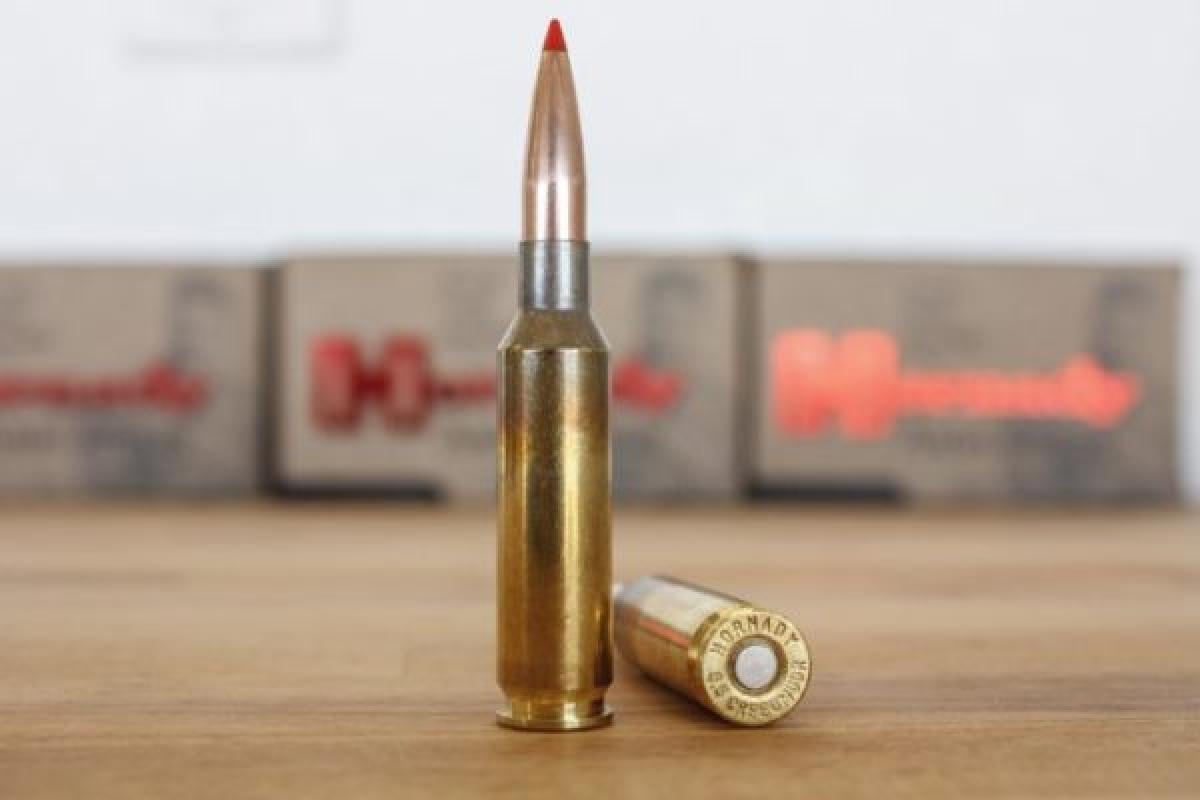The Naval Surface Warfare Center has issued a contract for millions of rounds of 6.5mm Creedmoor ammo for use by Special Operations and the Marine Corps.
The $40 million maximum award, to South Dakota’s Black Hills Ammunition Inc., was announced by the Pentagon earlier this week, with Black Hills beating out submissions from five other companies. The pre-solicitation notice issued last December was for 17,367,760 rounds of DODIC AC58 6.5x49mm Special Ball Long Range Ammunition.
Tested by the U.S. Army Special Operations Command in 2017 for the Precision Intermediate Caliber Ammunition program, it was qualified for use by USSOCOM units the following year.

 laststandonzombieisland.com
laststandonzombieisland.com

The Geissele Mid Range Gas Gun – Sniper (MRGG-S), Mark 1 Mod 0 rifle. The new sniper support weapon and designated marksman rifle, chambered in 6.5 CM, was ordered “to improve the intermediate range sniper rifle lethality, reliability and performance when suppressed during 50-1,500 meter engagements,” according to its 2023 Pentagon contract announcement. (Photo: Geissele)
The 6.5 mm Creedmoor has been adopted for specific uses within the US military, particularly by US Special Operations Command (USSOCOM) and the US Marine Corps (USMC), primarily for semi-automatic sniper rifles to replace existing 7.62mm NATO and .300 Winchester Magnum platforms due to its superior long-range performance and reduced recoil. The Naval Surface Warfare Center also recently placed a contract for millions of rounds of 6.5 Creedmoor ammunition for these units, indicating broader adoption.
Key Details of Adoption

 www.pewpewtactical.com
www.pewpewtactical.com
The $40 million maximum award, to South Dakota’s Black Hills Ammunition Inc., was announced by the Pentagon earlier this week, with Black Hills beating out submissions from five other companies. The pre-solicitation notice issued last December was for 17,367,760 rounds of DODIC AC58 6.5x49mm Special Ball Long Range Ammunition.
Tested by the U.S. Army Special Operations Command in 2017 for the Precision Intermediate Caliber Ammunition program, it was qualified for use by USSOCOM units the following year.
Navy Orders $40 Million worth of 6.5 Creedmoor Ammo
The Naval Surface Warfare Center has issued a contract for millions of rounds of 6.5mm Creedmoor ammo for use by Special Operations and the Marine Corps. The $40 million maximum award, to South Dak…
 laststandonzombieisland.com
laststandonzombieisland.com
The Geissele Mid Range Gas Gun – Sniper (MRGG-S), Mark 1 Mod 0 rifle. The new sniper support weapon and designated marksman rifle, chambered in 6.5 CM, was ordered “to improve the intermediate range sniper rifle lethality, reliability and performance when suppressed during 50-1,500 meter engagements,” according to its 2023 Pentagon contract announcement. (Photo: Geissele)
The 6.5 mm Creedmoor has been adopted for specific uses within the US military, particularly by US Special Operations Command (USSOCOM) and the US Marine Corps (USMC), primarily for semi-automatic sniper rifles to replace existing 7.62mm NATO and .300 Winchester Magnum platforms due to its superior long-range performance and reduced recoil. The Naval Surface Warfare Center also recently placed a contract for millions of rounds of 6.5 Creedmoor ammunition for these units, indicating broader adoption.
Key Details of Adoption
- Sniper Platforms:
The adoption primarily involves 6.5mm Creedmoor sniper systems, such as the Geissele MRGG-S rifle, replacing the Mk13 and M110 sniper rifles.
- Performance Benefits:
The 6.5 Creedmoor offers superior ballistic performance compared to .308 Winchester, including more velocity retention, less wind drift, and a higher ballistic coefficient at longer ranges, enhancing target acquisition and hit probability.
- Reduced Recoil:
The milder recoil of 6.5 Creedmoor cartridges makes the rifles easier to shoot accurately, a crucial factor for sniper operations.
- Ammunition Procurement:
In addition to rifle adoption, the military is also in the process of developing or purchasing 6.5mm Creedmoor ammunition to support these new platforms.

6.5 Creedmoor [Ultimate Guide]: Military’s New Caliber
Newly adopted by the US military, find out why the 6.5 Creedmoor rocks. We cover ballistics vs the .308, recommended rifles, AR-10 uppers, ammo, and more.
 www.pewpewtactical.com
www.pewpewtactical.com



